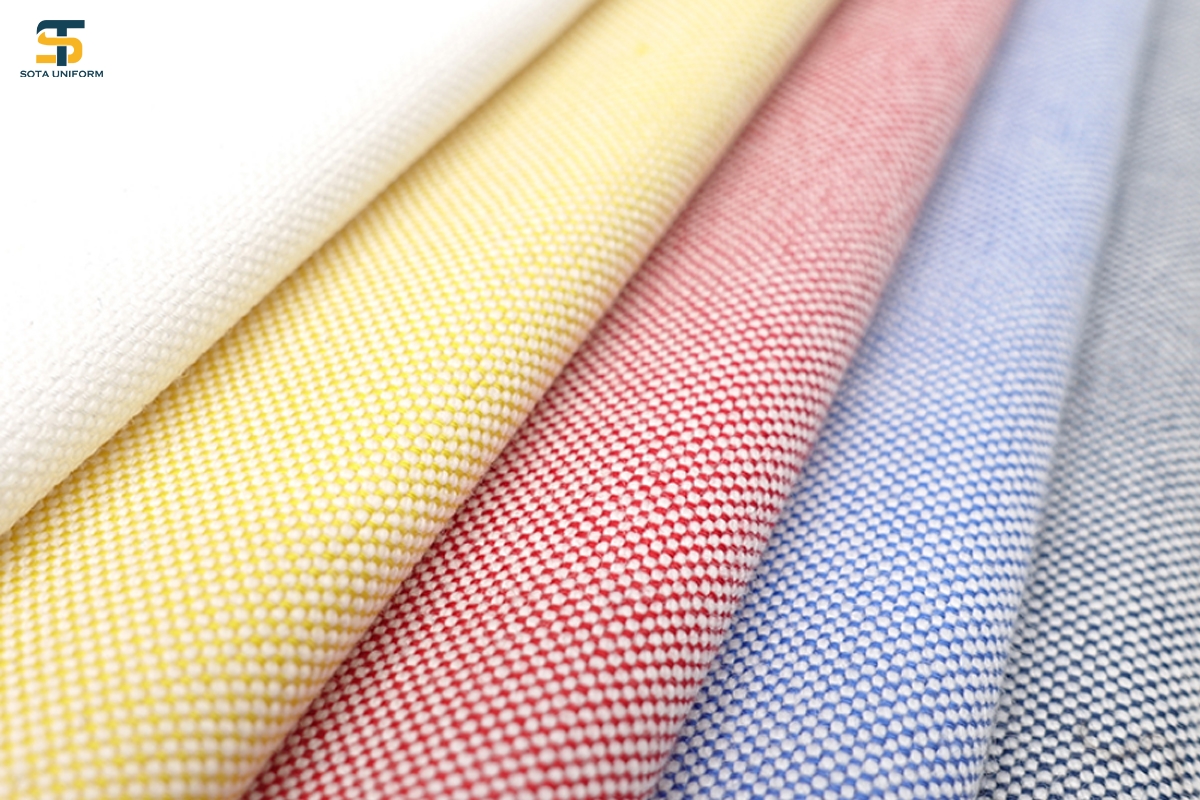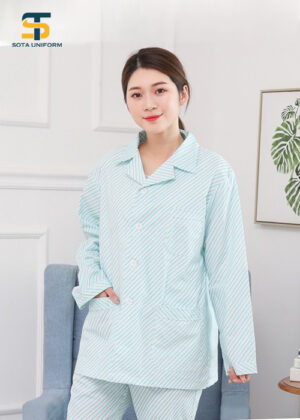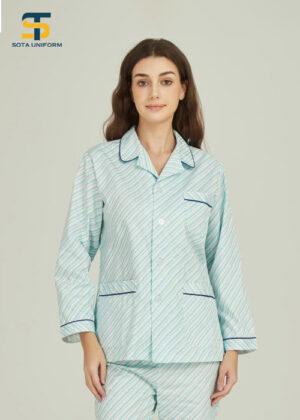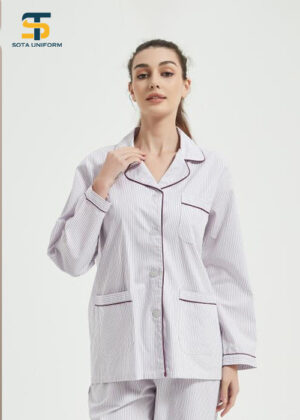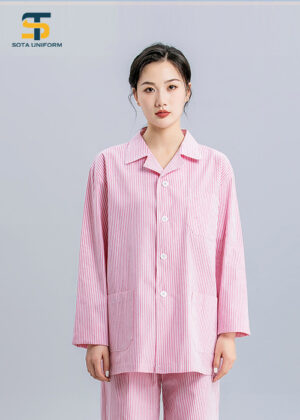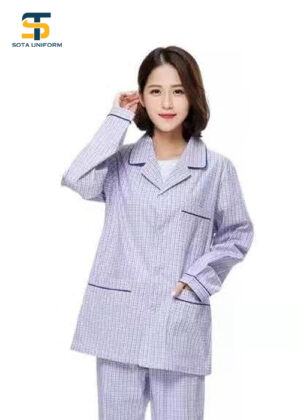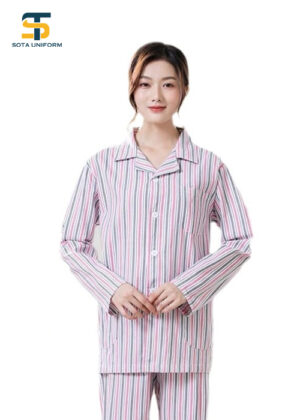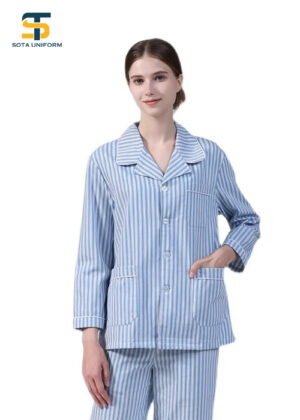Patient uniform
Not only doctors and medical staff are equipped with uniforms, but patients also have their own uniforms. This not only ensures comfort for patients but also creates uniformity in the hospital. Let's learn more about patient uniforms through the following article of Sota Uniform!
The importance of patient uniforms
Limit the spread of disease
The hospital environment always has the potential for dangerous infectious diseases. Therefore, not only the medical staff but also the patients are provided with uniforms. Uniforms play an important role in limiting the spread of disease and protecting the health of patients.
Wearing a uniform also helps to clearly distinguish between patients and their families, limiting the introduction of pathogens from outside into the treatment area. In particular, for patients with infectious diseases, wearing separate uniforms is mandatory, helping medical staff easily identify and apply appropriate preventive measures.
Uniform materials are often carefully selected to ensure antibacterial properties, easy cleaning and sterilization at high temperatures, helping to eliminate pathogens.

Patient comfort
Usually, the treatment process will be long and the patient will have to stay in the hospital for a while. Uniforms will help the patient feel more comfortable during treatment.
Uniforms are often designed simply with a loose style, convenient for patients during their movements and activities in the hospital. In addition, uniforms are also made from soft, cool and sweat-absorbent materials, not causing discomfort to the wearer. This comfort not only helps patients reduce physical discomfort but also creates a positive, optimistic mentality.
Demonstrate hospital professionalism
In addition to the above factors, uniforms also play an important role in demonstrating the professionalism of the hospital. The visual synchronization between medical staff and patients creates a professional image of style and prestige of the hospital.

Patient uniform regulations
Design
The uniform for patients is not too strict in style but needs to ensure the factors of spaciousness and comfort. This uniform has a simple design including a shirt and pants in the same set. The shirt is usually designed with a V-neck or a collar, short or long sleeves, hip length with a loose shirt size. The pants are usually straight-leg pants and elastic waist, very convenient to wear.
Thanks to this design, patients always feel comfortable during treatment and daily activities in the hospital.
Color
The colors of patient uniforms are carefully selected to create a comfortable feeling for the wearer and to harmonize with the hospital space.
Uniforms are often chosen in neutral colors such as: white, light blue, blue, blue stripes, etc. These colors bring a sense of relaxation to the patient as well as easily identify stains for easy handling. It is important to avoid using bright, hot colors to limit the impact on the patient's mood.
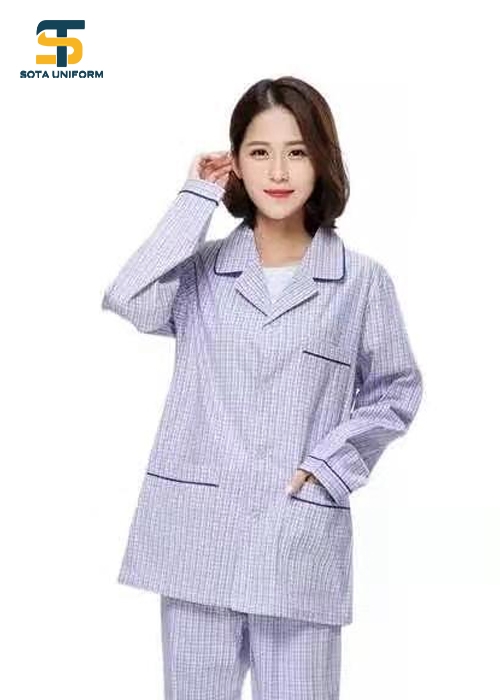
Material
With a special environment like a hospital, patient uniforms always have strict requirements on materials. Important criteria for uniforms include: soft, breathable, sweat-absorbent, antibacterial, durable and safe for the skin.
Soft, breathable and sweat-absorbent fabric will ensure maximum comfort for patients when wearing. The fabric needs to be durable, easy to wash, quick to dry and withstand high temperatures to facilitate sterilization, ensuring absolute hygiene in the hospital environment. In particular, the fabric must be safe and not cause skin irritation, even for patients with open wounds or sensitive skin.
Materials for sewing patient uniforms
Khaki fabric 65/35
When mentioning this uniform material, we cannot ignore khaki material. This material is composed of 65% Polyester and 35% cotton with great advantages such as:
- The fabric is thick and holds its shape well.
- High durability and no shrinkage, withstands the washing force of industrial washing machines.
- The fabric is less wrinkled and less prone to pilling, ensuring the aesthetics of the uniform.
- Has the ability to absorb sweat, ensuring ventilation when wearing.
- Colorfast, retains color well after many washes.
- Much cheaper than other materials.
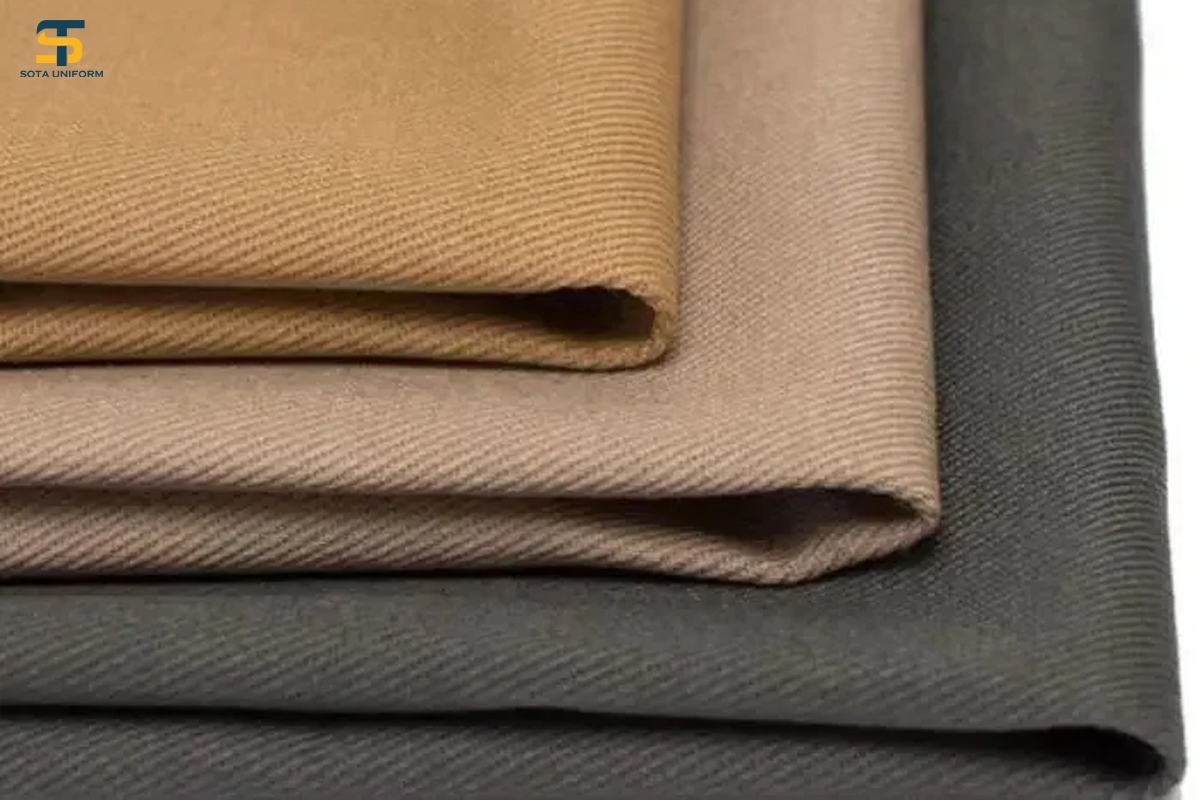
Kate Ford fabric
Kate Ford fabric is also a worthy choice when sewing medical uniforms. The main components of this fabric are cotton and PE synthetic fiber - a type of synthetic fiber with anti-wrinkle and high durability properties. Thanks to this component, Kate Ford fabric stands out with the following advantages:
- The fabric is thick and durable.
- Has good sweat absorption.
- Cool and non-irritating to the skin.
- Keep uniform form good.
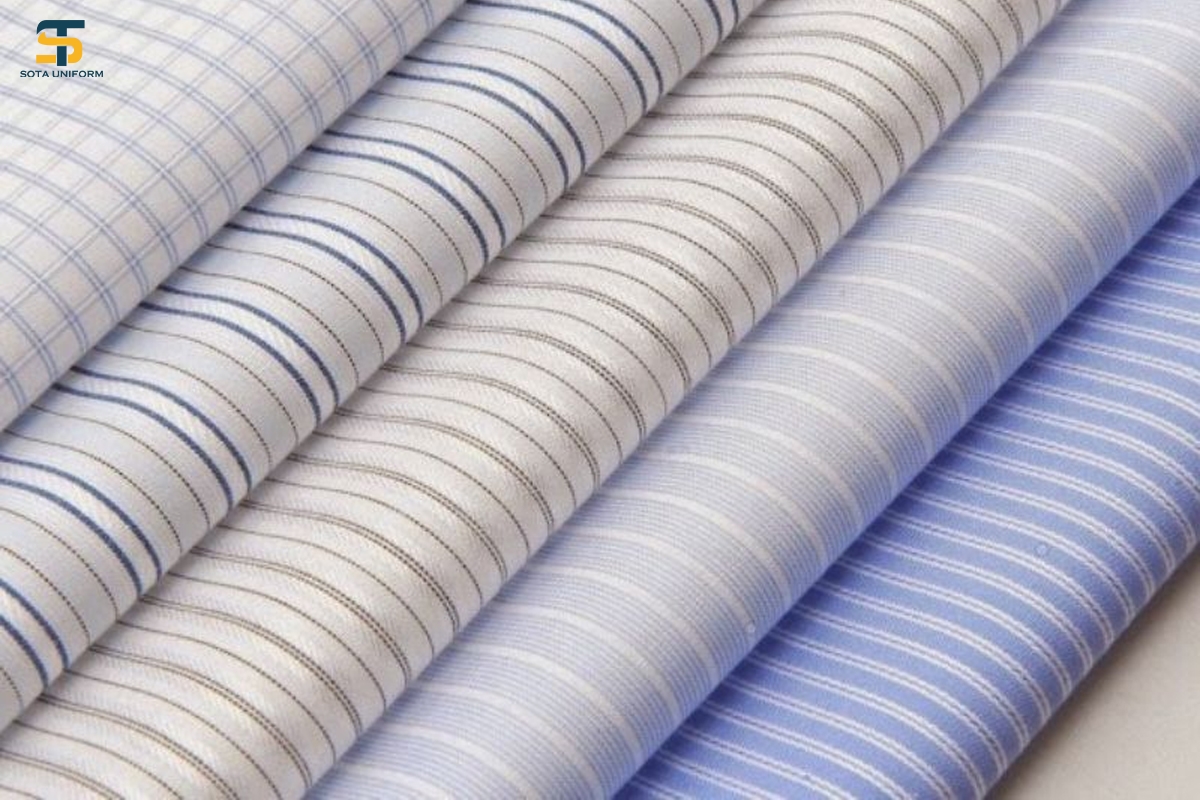
Kate silk fabric
Kate silk fabric is a synthetic fiber fabric with the main components being 35% Polyester and 65% cotton. Kate silk fabric is known for its outstanding advantages such as:
- The fabric has a good form retention ability.
- High durability and colorfastness.
- Fabric is less wrinkled and less pilling.
- Sweat absorbent and breathable.
- Safe and non-irritating to skin.
- Reasonable price.
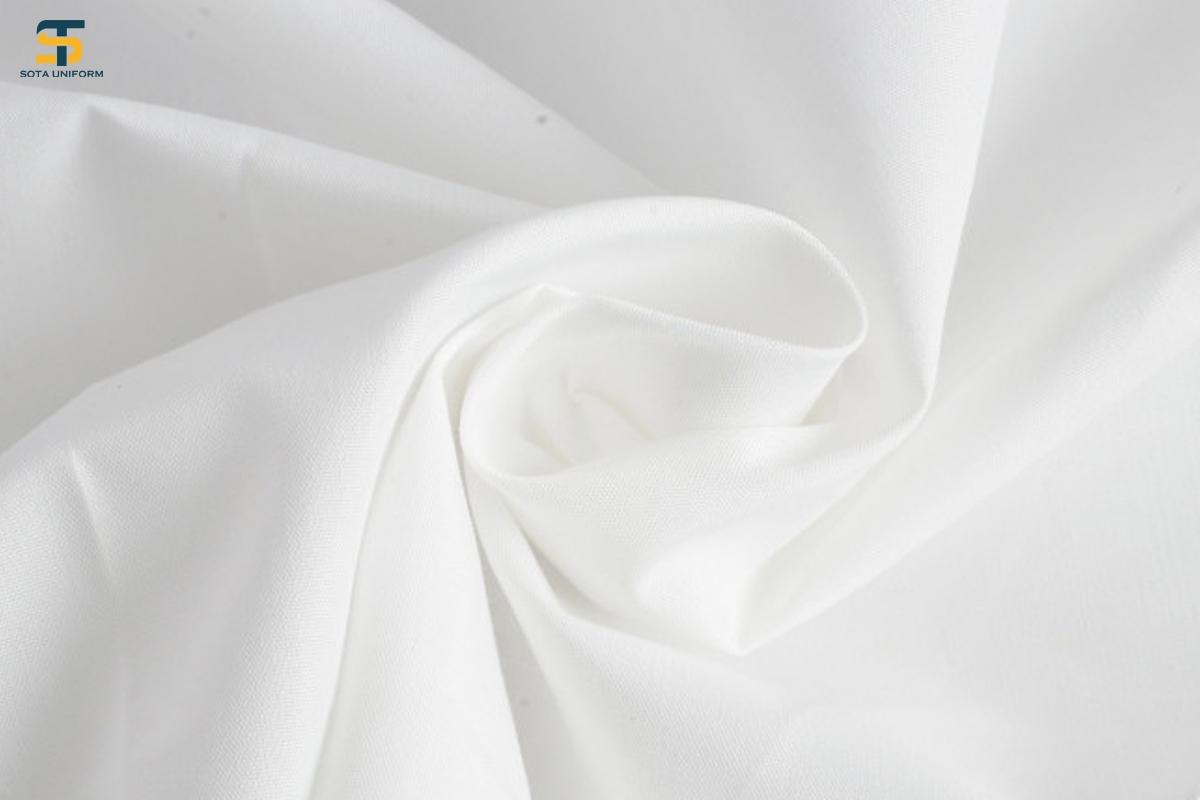
Oxford fabric
The main feature of oxford fabric is the small squares on the fabric surface. This material is mainly composed of 65% polyester and 35% cotton, so it is outstanding in water resistance and strength.
Oxford fabric has the following outstanding advantages:
- Good water resistance due to high Polyester ratio, prevents moisture from sticking to the fabric for a long time, causing mold and odor.
- Light weight, softer than khaki, has very good dust resistance.
- Durable, good abrasion resistance.
- Easy to wash and maintain, dries quickly after washing.
- Has good anti-wrinkle ability.
